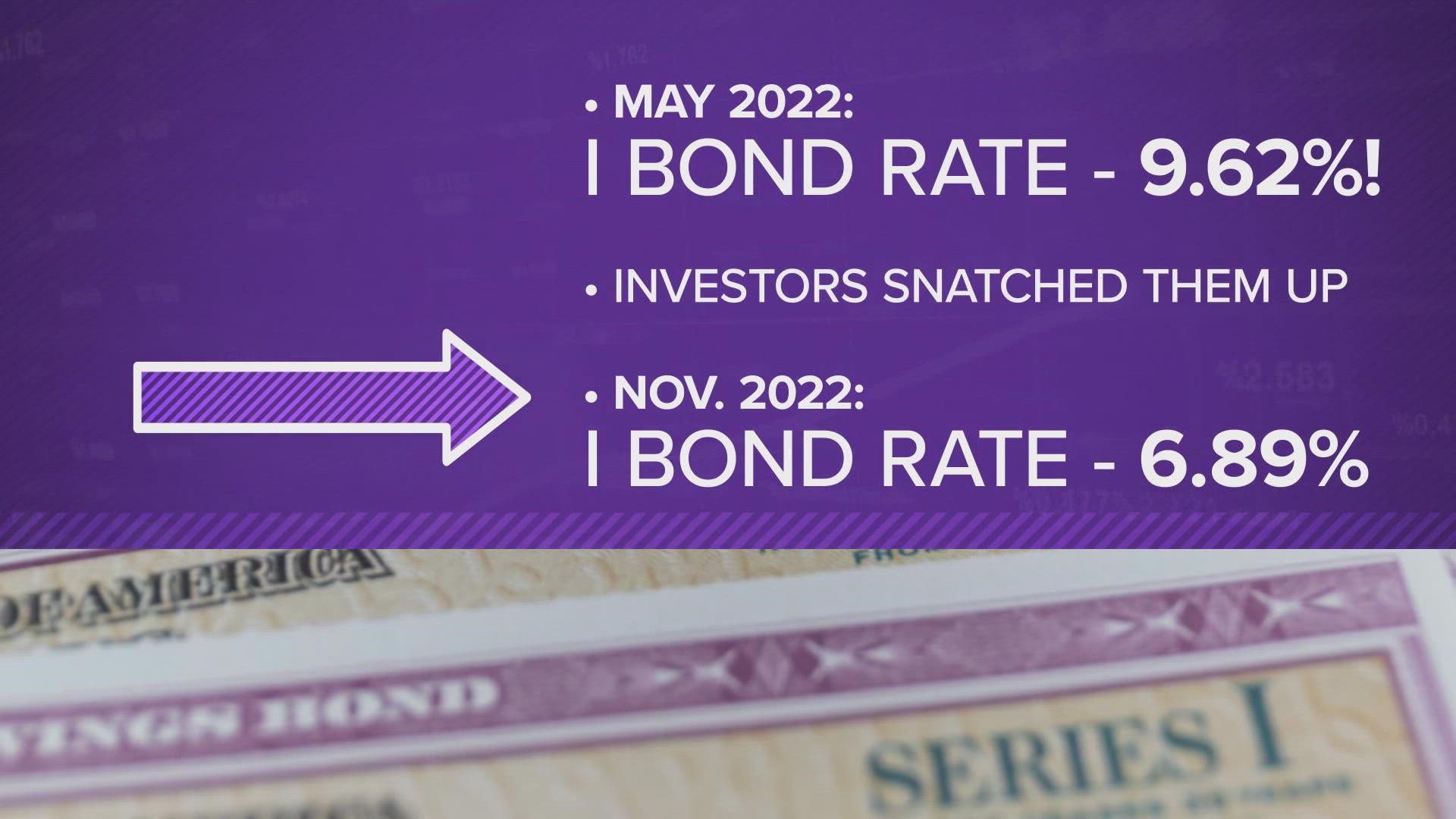DALLAS — Inflation is usually considered a negative thing. But, some people have been very happy with the “I word” because they invested in I bonds.
Those are Series I bonds issued by the U.S. government. The interest they pay is based on inflation, which has been historically high in 2022.
Each May and November, the Treasury Department looks at inflation and then sets the interest rate that I bonds pay.
Back in May, that figure was a whopper… an interest rate of 9.62%. Many investors snatched up that guaranteed nearly double-digit return because they thought something that good probably wouldn’t last when the interest rate was reset in November.
They were right.
The rate I bonds pay went down to 6.89% in November. But, if you bought them after the rate was set in May, but before the new rate was set in November, you still get that previous higher rate of 9.62% for the first six months you own them.
Many investors were buying in that time period. The Treasury reports that during just the final week of October, they issued nearly twice as much in I bonds ($1.95 billion) than in the entirety of the year before ($1.0 billion).
Because of the demand, the phone lines at the Treasury Department were jammed, to put it mildly. That was a very bad thing for account holders who forgot their passwords and got locked out. That happened to one woman who wanted to buy more but couldn’t log in.
She contacted us and exclaimed, "There has to be a readily accessible way to get accounts unlocked and reset."
But Treasury officials told us the only way to do that is to call in. And during the I bond buying frenzy, call volumes exploded. Wait times went from seconds to hours.
Now that the rush for the unusually high-rate I bonds has passed, the Treasury Department says it’s much easier to get through on the phone.
Some basics about I bonds
Each person can invest $10,000 per year into them, so as the end of 2022 nears, someone who hasn’t previously bought the bonds this year could invest up to $10,000 in them this month and another $10,000 in them in 2023.
Even though the return has dropped from what it was in May, an investor can earn more interest than they would get in a CD or an interest-bearing savings account at current rates.
As inflation goes down, though, the I bond rate will go lower as well when it is reset each May and November.
This is a 30-year investment, but you can cash it out after one year.
If you cash out before five years, the penalty is that you give up the interest you would’ve earned for the most recent three months.
If you are interested, you may want to first speak with a financial advisor. Additionally, here is more information from the Treasury Department.

